Do you know how to permanently delete a file using the Permanently delete option of the context menu? Do you have any idea how to add or remove this option? If not, do not worry. This article from MiniTool offers you a detailed guide.
In general, when you delete a file from your hard drive (both internal and external), it is sent to the Windows Recycle Bin, which allows you to get the deleted file back if needed.
However, over time, your Recycle Bin space may exceed the limit. Windows has an option called “Permanently delete” that allows you to permanently delete files directly instead of putting them in the Recycle Bin.
So, how to add the Permanently delete option to the context menu?
How to Add Permanently Delete Option to Context Menu
You can add this option by using the Registry Editor. Windows Registry Editor is a very important tool that allows you to view and monitor the Windows operating system registry, keep the registry running, and make root-level and administrative-level changes such as setting access permissions or changing hardware or software levels configuration.
Here you can see detailed steps to add the Permanently delete option to the context menu.
Warning: Any wrong changes to the registry may cause a system failure. It is recommended that you back up the registry in advance and strictly follow the steps below.
Step 1. Press Windows + R key combinations to open the Run window.
Step 2. Type regedit in the input box and press Enter (Select Yes in the pop-up window).
Step 3. Copy the path below to the registry navigation bar and press Enter (Or you can find and open the folders one by one).
Computer\HKEY_CLASSES_ROOT\AllFilesystemObjects\shell
Step 4. Right-click the shell folder and choose New > Key.

Step 5. Name the key you created as Windows.PermanentDelete. Then right-click Windows.PermanentDelete to select New > String Value.
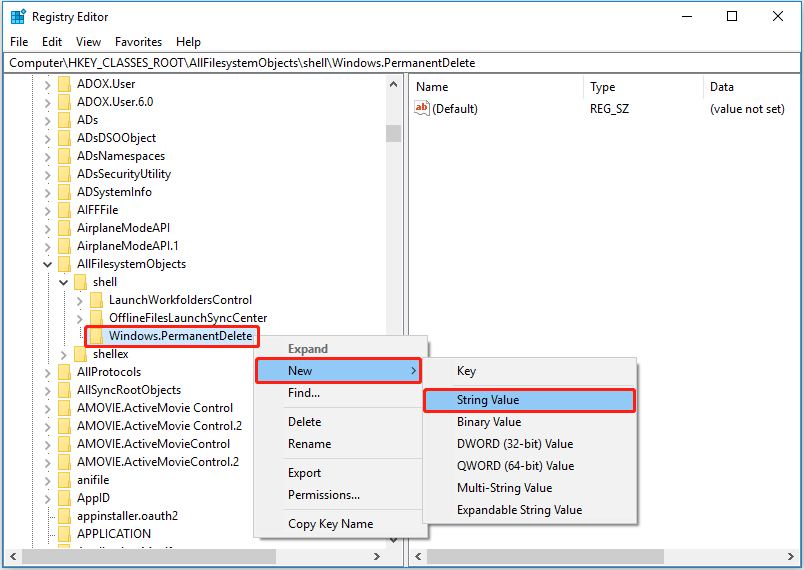
Step 6. Name the string value you created as CommandStateSync (In case, you can right-click the string value on the right panel to select Rename).
Step 7. On the right panel, right-click any blank space and choose New > String Value. Then name the string value as ExplorerCommandHandler.
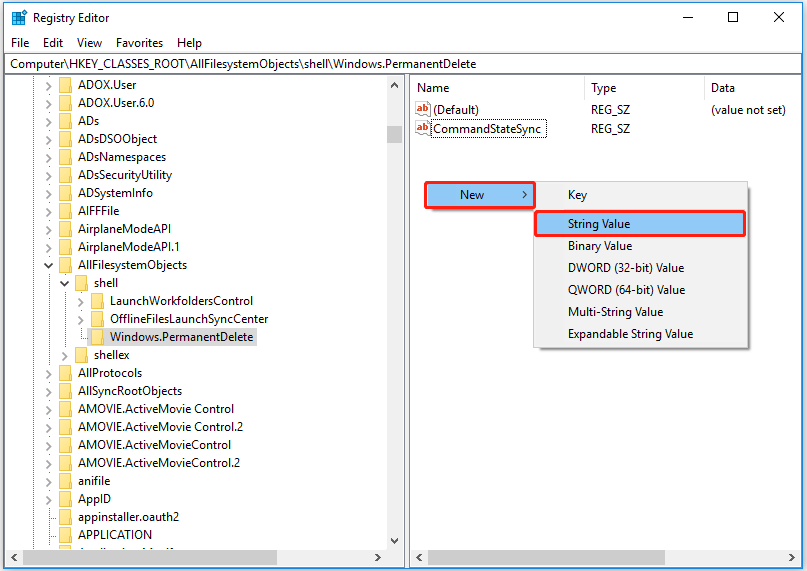
Step 8. Double-click ExplorerCommandHandler and input E9571AB2-AD92-4ec6-8924-4E5AD33790F5 in the value data box. Then click OK.
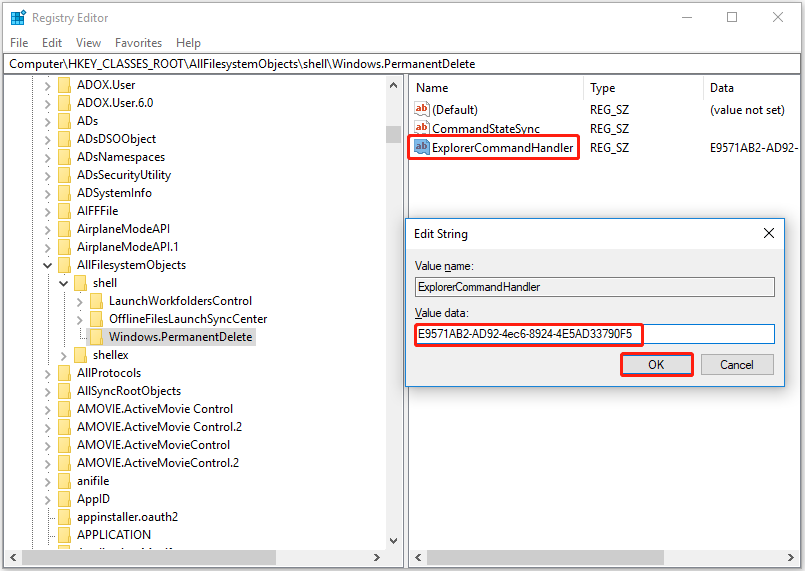
Step 9. Create a new string value in the blank space and name it Icon. Then double-click it to set up the value data as shell32.dll,-240. After that, press Enter.
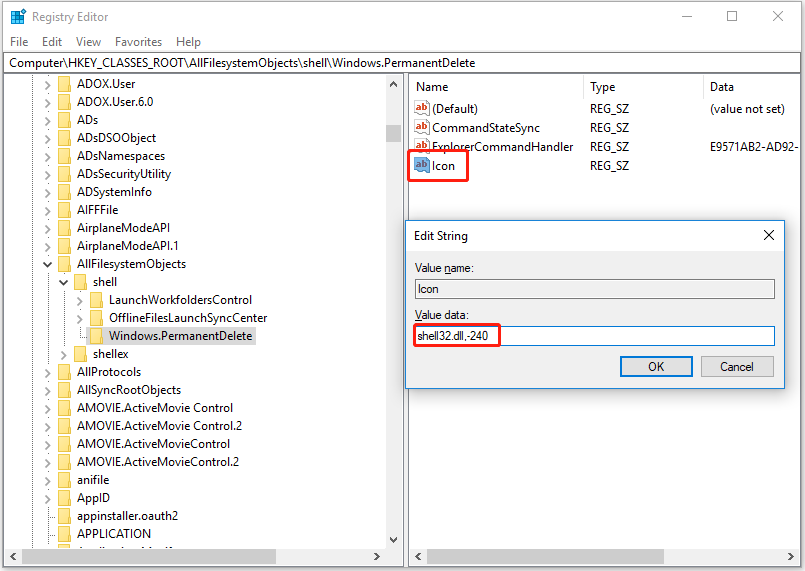
Step 10. Create a new string value by following the same steps above and name it Position. Double-click Position and set up the value data as Bottom. Then click OK or press Enter.

All operations to add the Permanently delete option to the context menu are completed. Now you can right-click any file and check whether the Windows Permanently delete option is there.
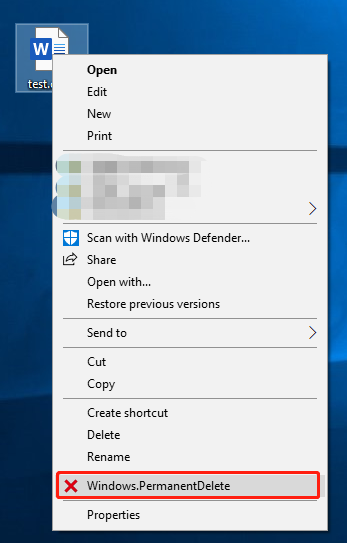
How to Remove the Permanently Delete Option From the Context Menu
If you want to remove the Permanently delete option from the context menu, you can follow the steps below.
Step 1. Open Registry Editor.
Step 2. Navigate to Computer\HKEY_CLASSES_ROOT\AllFilesystemObjects\shell.
Step 3. Right-click Windows.PermanentDelete and select Delete.
Step 4. In the confirm key delete window, click Yes.
Now you have removed the Permanently delete option from the context menu.
How to Recover Permanently Deleted Files
The files deleted by using the Permanently delete option will not be stored in the Recycle Bin. And you cannot restore them from the Recycle Bin if you accidentally deleted your important files. In this case, how to recover lost files?
Here, professional data recovery software – MiniTool Power Data Recovery is recommended to you. It supports scanning and recovering data in all file storage devices, such as SD cards, USB drives, SSDs, etc., and helps you recover 1GB of data for free. You can download it and try it out.
MiniTool Power Data Recovery FreeClick to Download100%Clean & Safe
For detailed steps to use it, you can refer to this article: How to Recover Permanently Deleted Files in Windows.
Wrapping Things Up
In a word, this article talks about how to add and remove the Permanently delete option to the context menu. Hope you can permanently delete a file from the context menu by following the guide above. If you have any questions when using MiniTool Power Data Recovery, please feel free to contact us via [email protected].
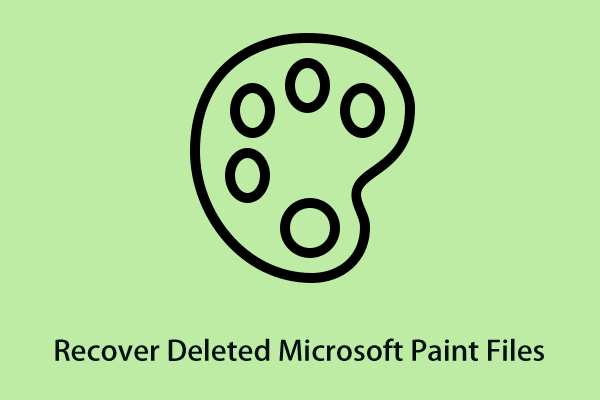
User Comments :